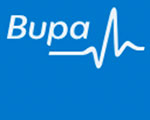Breakthrough Open Innovation with Internal Teams
Published Oct-20-13Breakthrough:
Big money seed funding is awarded to five employee teams following Bupa’s internal open innovation challenge to reduce its carbon footprint.
Company:
Bupa, United Kingdom
The Story:
 Open innovation is not only about bringing the outside in. The paradigm is also a means of engaging those on the inside. Leveraging the creativity and smarts of employees is an effective way for firms to innovate faster, better and more cost-effectively. It is a powerful mechanism for employee engagement and spurs their motivation.
Open innovation is not only about bringing the outside in. The paradigm is also a means of engaging those on the inside. Leveraging the creativity and smarts of employees is an effective way for firms to innovate faster, better and more cost-effectively. It is a powerful mechanism for employee engagement and spurs their motivation.A formalized open innovation approach is required because it's difficult for employees to lend their know-how, experience and talents to a challenge if a structures aren't in place. And the more focused and tightly scoped the challenge, the more likely the chance of receiving relevant ideas that solve the problem at hand.
Green Challenge
Healthcare organization Bupa is committed to looking after the health of individuals, but it’s also on a mission to help create a healthier planet. One of its ambitious goals is to reduce its own carbon footprint by 20% by 2015.
Cutting carbon as the business grows and expands around the world is a task that requires innovative and creative thinking. So in partnership with non-profit organization Forum for the Future Bupa turned to its employees and created Spark! Carbon Innovation Challenge in 2011.
Internal Innovation Teams
The open innovation initiative ran for six months, and during that time ten teams were formed by Bupa employees from several countries including Australia, Latin America, New Zealand and Denmark.
They took part in numerous in-person and tele-presence workshops where ideas were originated, discussed and developed. After five months, the best ideas were submitted to a jury for final adjudication.
The panel picked five winners who received a share of the £250,000 (approx. USD $400,000) prize pot to help them bring their concepts to life.
The five winning ideas were:
Cutting-edge lighting pilot schemes in Bupa Care Homes. A trial of tunable white lighting in care homes. It provides lighting similar to ambient daylight conditions and cuts energy usage.
Changing employee behavior. Employees in retail centers in Bupa Australia are being encouraged to adopt more eco-friendly behaviors. Their places of work will be given a star rating system dependent on their energy efficiency.
Homing in on carbon hotspots. Employees identified a Bupa care home in Australia with the largest carbon footprint and devised numerous ways to tackle it. They also came up with a number of process for other care homes including changing employee behavior and investing in energy efficiency technology
Smart working. Developing ways for employees to work anywhere at any time, on any device and with anyone. Such smart and flexible working can cut down on business travel and boost employee well-being.
Formulating low carbon solutions. A Bupa team in Denmark studied contributing factors to its carbon footprint and discovered that their computer servers were the largest contributors. To improve the situation it is developing a low carbon data center and improving energy efficiencies.
Future Direction
Bupa felt that its internal open innovation challenge was so successful that the company is thinking of devising future projects to reduce its carbon footprint.
Next Story »

